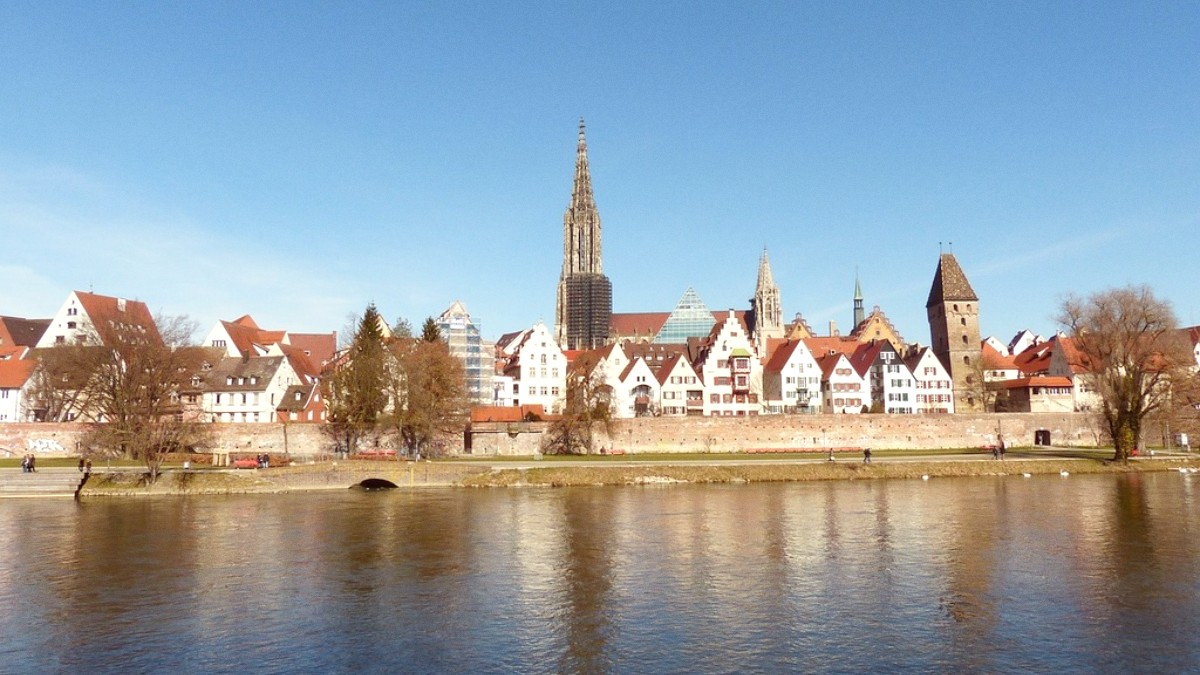
Baden Wurttemberg, Germany
Ulm's cuisine is rooted in Swabian (Schwäbisch) traditions. This regional cooking style developed from resourceful cooking, using local ingredients and simple preparations.
Historically, Swabian food was peasant cuisine, making clever use of ingredients like flour, eggs, lentils, potatoes, and various meats. The cuisine delivers hearty, fulfilling meals.
Swabian cuisine differs from Bavarian (more meat-focused) or northern German (more fish, different potato preparations).
Emphasis on noodle-based dishes, notably Spätzle and Maultaschen, and unique preparations of common ingredients.
The Swabian region, Ulm included, maintains pride in these distinct culinary traditions.
Soft, irregular egg noodles. Served as a side or in preparations like Käsespätzle (with cheese and onions) or with lentils and sausages.
Find in traditional Swabian restaurants.
"Swabian ravioli," pasta pockets filled with minced meat, ham, spinach, and spices. Served in broth ("In der Brühe"), pan-fried ("Geschmelzt"), or sliced and fried with egg ("Geröstet").
A local favorite, available widely.
Roast beef with crispy fried onions (Zwiebelrostbraten) or a hearty beef, potato, and Spätzle stew (Gaisburger Marsch).
Many traditional eateries feature these.
White asparagus (Spargel) is a popular delicacy from April to June. Many restaurants offer special menus.
Pfifferlinge (Chanterelle mushrooms) are popular in summer/early autumn. Wild (Game) dishes are available in autumn.
Ulm has several restaurants with upscale German or international cuisine. Look for establishments in local gourmet guides.
Abundant throughout Ulm, with traditional Swabian, classic German, and various international cuisines.
Quick, cheap, and satisfying meals. Great for on-the-go or self-catering.
Held regularly on Münsterplatz. Find fresh produce, regional meats, cheeses, and prepared foods.
Good for experiencing local life and grabbing a snack.
Due to its diverse population, Ulm offers a wide range of international restaurants.
Options include Italian, various Asian eateries, and Turkish restaurants.
Increasingly available. Look for "vegetarisch" or "vegan" on menus. HappyCow app helps locate dedicated restaurants.
Halal food at Turkish/Middle Eastern restaurants. Kosher food is rare; plan self-catering for strict requirements.
Awareness is growing. Inform staff ("glutenfrei", "laktosefrei"). Pre-packaged items in supermarkets.
Apps and direct communication with restaurants assist with dietary needs.
Volkshochschule Ulm (adult education center) offers German language courses.
Useful for longer stays.
Many are in beautifully restored half-timbered houses.
Request the bill with "Zahlen, bitte!" or "Kann ich bitte zahlen?".
German meal times are generally structured.
Restaurants offering upscale German or international cuisine. Consider those recognized by culinary guides.
Mix of traditional Swabian, classic German, and various international cuisines at reasonable prices.
Imbiss stalls (Currywurst, Döner), bakeries (breakfast, sandwiches), supermarkets (self-catering).
Vegetarian dishes are available. Many traditional dishes can be vegetarian. Dedicated options present.
HappyCow app helps locate these.
Growing awareness of gluten-free ("glutenfrei") and lactose-free ("laktosefrei") diets.
Inform staff of allergies. Research in advance. Pre-packaged items in supermarkets.
Be adventurous in trying local Swabian dishes, which are a delicious and comforting part of the region's identity.
Time your visit for seasonal produce like white asparagus in spring or chanterelle mushrooms in summer.
Do not hesitate to ask questions about dish ingredients or local recommendations.